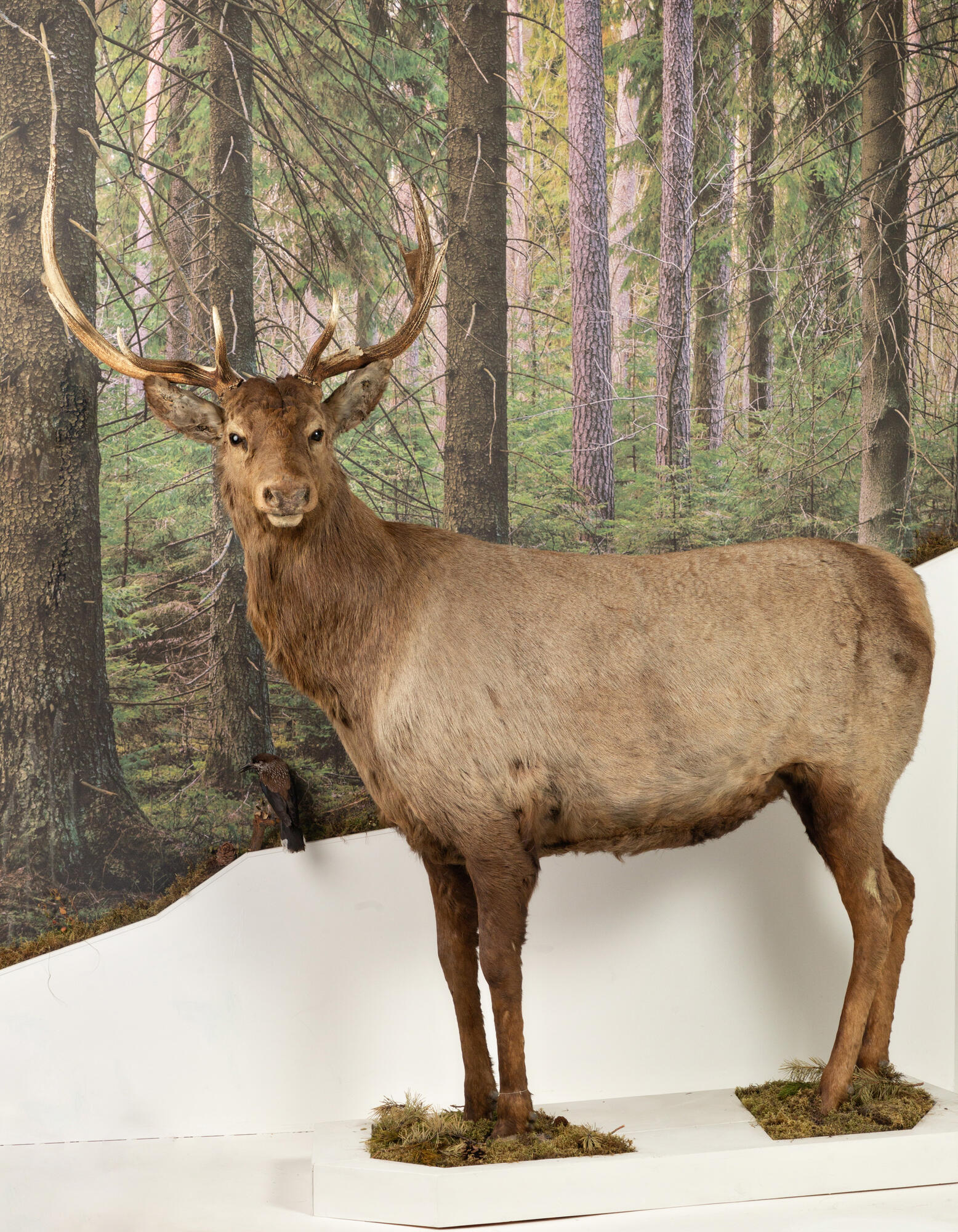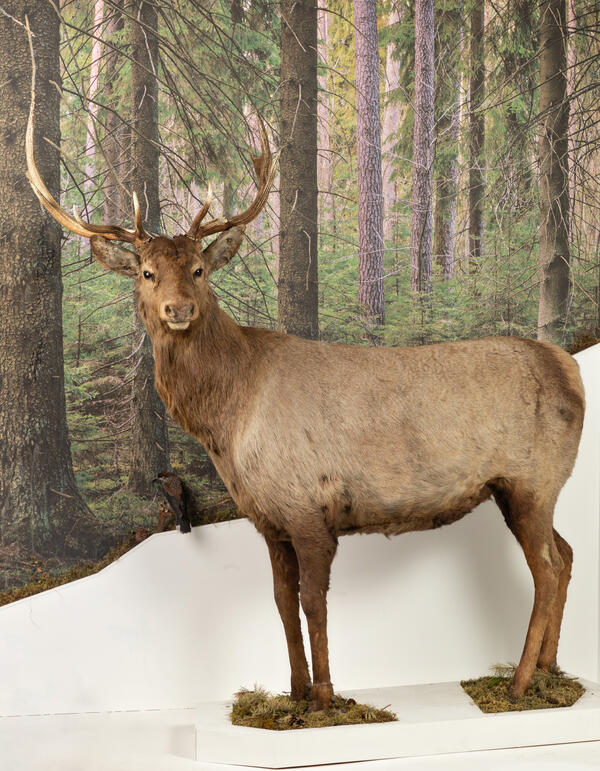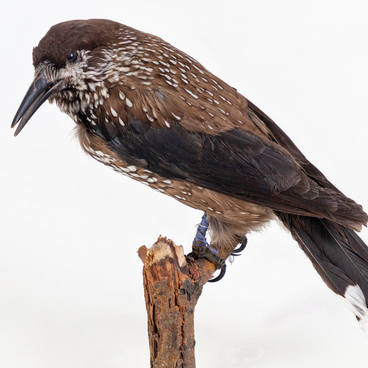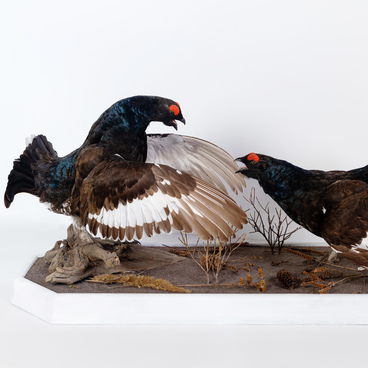Red deer are common in the mountain taiga zone of the Republic of Buryatia. In summer, Manchurian wapiti can be found even in the area of mountain Alpine meadows. The Khamar-Daban Mountain Range is the border of two subspecies of red deer. To the East lives Manchurian wapiti, and to the West — a larger maral. The weight of an adult male can reach 200-260 kilograms, and the body length can be up to 230 centimeters.
In summer, deer are active in the early morning and late evening. They prefer to stay in the shadows. In the heat, they often go into the water or lay down on patches of snow that has not melted. In winter, on the contrary, they prefer sunny slopes. They can graze almost around the clock, especially in severe frost. In addition to various herbs, young twigs, roots and bark, deer also eat salt. Deer often come to natural and artificial salt pans in search of unusual treats.
During the mating season in early September, one can hear the roar of male red deer, which is heard for many kilometers through the forest. During this period, the deer can make a wide variety of sounds ranging from hoarse to low and prolonged sounds resembling a lowing. The best word for the roar of deer is ‘trumpet’. It is the sound of a trumpet that is closest to the voice of a red deer.
The roaring deer was often depicted in paintings. A head thrown on its back with magnificent horns, and hooves spreading the ground. All this is characteristic of these animals. During the rut, fights between males are possible, due to which animals establish primacy. The opponents face with each other’s horns, thus attempting to knock down each other. Weaker males quickly leave the battlefield. It is possible to tell whether a male is strong or weak not only by its appearance, but even by its voice. A strong and more experienced deer has a hoarse and low voice, while a young and weak one has a higher and clearer voice. Once a year, at the beginning of spring, male deer shed their old antlers leaving only small appendages in their place, from which new, powerful branches grow by the end of summer. Non-ossified antlers of deer are called velvet antlers. They produce valuable raw materials for the pharmaceutical industry.
The most dangerous of the natural enemies of the deer is the wolf. In addition, bears, wolverines, and lynxes hunt it. But the greatest danger is man. The deer is a cautious animal and can smell the enemy at a distance of about 300 meters. The red deer is one of the fastest animals in the world. The speed of a deer running away from predators can reach up to 55 kilometers per hour, and in a jump it can cover a distance of 5-6 meters.
In summer, deer are active in the early morning and late evening. They prefer to stay in the shadows. In the heat, they often go into the water or lay down on patches of snow that has not melted. In winter, on the contrary, they prefer sunny slopes. They can graze almost around the clock, especially in severe frost. In addition to various herbs, young twigs, roots and bark, deer also eat salt. Deer often come to natural and artificial salt pans in search of unusual treats.
During the mating season in early September, one can hear the roar of male red deer, which is heard for many kilometers through the forest. During this period, the deer can make a wide variety of sounds ranging from hoarse to low and prolonged sounds resembling a lowing. The best word for the roar of deer is ‘trumpet’. It is the sound of a trumpet that is closest to the voice of a red deer.
The roaring deer was often depicted in paintings. A head thrown on its back with magnificent horns, and hooves spreading the ground. All this is characteristic of these animals. During the rut, fights between males are possible, due to which animals establish primacy. The opponents face with each other’s horns, thus attempting to knock down each other. Weaker males quickly leave the battlefield. It is possible to tell whether a male is strong or weak not only by its appearance, but even by its voice. A strong and more experienced deer has a hoarse and low voice, while a young and weak one has a higher and clearer voice. Once a year, at the beginning of spring, male deer shed their old antlers leaving only small appendages in their place, from which new, powerful branches grow by the end of summer. Non-ossified antlers of deer are called velvet antlers. They produce valuable raw materials for the pharmaceutical industry.
The most dangerous of the natural enemies of the deer is the wolf. In addition, bears, wolverines, and lynxes hunt it. But the greatest danger is man. The deer is a cautious animal and can smell the enemy at a distance of about 300 meters. The red deer is one of the fastest animals in the world. The speed of a deer running away from predators can reach up to 55 kilometers per hour, and in a jump it can cover a distance of 5-6 meters.



